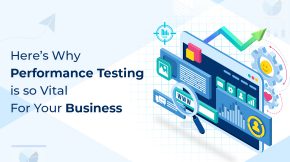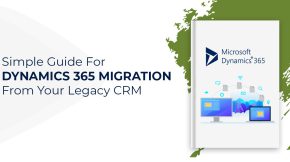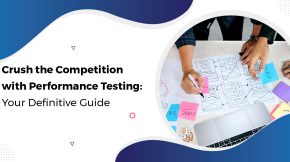The Evolution of Predictive Analytics in Insurance: A 2024 Perspective
The insurance industry has reached an inflection point. With troves of data becoming available, carriers now have an unprecedented opportunity to extract powerful insights using advanced analytics techniques.
Predictive analytics, in particular, is poised to become a game-changer. As we move towards 2024, next-generation predictive solutions will likely transform how insurers understand risk, engage customers, detect fraud, and make strategic decisions.
However, to tap into the full potential of predictive analytics in insurance, insurers need to have a solid roadmap. This article will provide in-depth perspectives on:
- The current maturity of insurance predictive analytics
- Key evolutionary trends to expect by 2024
- Must-have components of a future-ready analytics architecture
- Critical steps to ensure a smooth analytics transformation
Let’s get started.
The State of Insurance Analytics Today
Broadly speaking, predictive analytics refers to various statistical and machine-learning techniques that analyze current and historical data to make predictions about unknown future events.
In the insurance context, carriers are applying predictive analytics to extract insights across key functions:
Underwriting and Pricing
Predictive models help actuaries determine policyholder risk levels more precisely. This enables accurate underwriting decisions and customized, risk-based pricing.
Key techniques used: regression modeling, decision trees, clustering algorithms.
Claims Processing
Predictive analytics in insurance helps identify fraudulent claims faster and expedite valid settlements. Text mining of adjusters’ notes also provides insights.
Key techniques used: supervised classification, text mining, and social network analysis.
Customer Engagement
Analytics identifies cross-sell opportunities and customers at risk of churning. This supports personalized customer engagement.
Key techniques used: sentiment analysis, and propensity modeling.
Financial Planning
Insurance analytics enables more accurate forecasts of future liabilities, reserves, and capital requirements.
Key techniques used: time series analysis, monte-carlo simulations.
Most large carriers actively use some form of insurance analytics today. According to recent surveys by Deloitte and Novarica, adoption varies by line of business:
- Life Insurance – 70% of large carriers use predictive analytics.
- P&C Insurance – 40-50% of large carriers use insurance analytics.
- Health Insurance – Up to 20% of carriers use predictive analytics.
Additionally, advanced techniques like machine learning are still in their early stages of adoption. But the scene is set for rapid evolution.
The Next Evolutionary Wave: Four Key Insurance Analytics Trends
As we enter the 2024s, four key trends will shape the next generation of predictive analytics in insurance:
- Internet of Things and Real-Time Analytics
The Internet of Things (IoT) is exploding. By 2020, there will be 55 billion connected devices worldwide. For insurers, this unlocks new data streams like:
- Telematics data – Driving behavior, vehicle health, accident physics.
- Wearables data – Health, lifestyle, location, safety habits.
- Smart home data – Home environment, security, water leaks, power issues.
This real-time and contextual data can feed into real-time predictive analytics systems. With machine learning techniques, insights can be extracted at the point of data generation to trigger instant actions.
For example, risky driving behavior could be identified to alert drivers or adjust premiums mid-policy. Early signs of health conditions could prompt preventive care recommendations.
Real-time analytics will be indispensable in the IoT world. Systems need to act responsively, not reactively.
- Commercial Access to Advanced AI
The hype bubble around AI is deflating as it matures into practical business applications. Insurers can now access enterprise-grade cognitive technologies like:
- Computer vision – Analyze damage images and video faster and more accurately.
- Natural language processing – Understand open-ended customer feedback.
- Deep learning platforms – Build and deploy self-training algorithms.
- Conversational AI – Analyze thousands of hours of call center recordings.
- Cloud-based AI – Run complex models on AutoML cloud platforms.
With ready access to these technologies, insurers can take predictive analytics to the next level across the value chain.
- The Democratization of Analytics
Historically, analytics skills have been concentrated in isolated teams. But modern tools are making analytics more accessible company-wide. Trends like:
- Automated machine learning (AutoML) – Enables less technical users to generate advanced models with ease.
- Embedded analytics – Integrates insights directly into business apps via APIs.
- Analytics process automation – Automates repetitive analytical tasks.
- Citizen data science – Allows decentralized analytics by non-data scientists.
This will help disseminate data-driven decision-making at scale. Business users will have analytics seamlessly infused into their workflows.
- Analytical Ecosystems with Specialized Partners
Very few carriers will build universal in-house analytics capabilities. Instead, carriers will likely form ecosystems of analytics partners.
Rather than generalists, insurers will select partners specializing in:
- Data engineering – To integrate and prepare heterogeneous data.
- Predictive analytics – For niche analytical capabilities.
- IoT analytics – To handle specific IoT data types.
- Customer analytics – Aligned to evolving customer expectations.
- Geospatial analytics – For hyperlocal insights.
- Catastrophe modeling – For climate risk management.
This strategy provides flexible access to leading-edge analytics capabilities while focusing in-house talent on differentiating initiatives.
Building a Future-Ready Predictive Analytics Architecture
With rapid evolution underway, how can insurers architect predictive analytics in insurance systems to stay adaptable? Here are the foundational components:
- An Open, Cloud-Based Stack
Gone are the days of monolithic enterprise software. The future is decentralized, best-of-breed components on the cloud. This approach gives insurers:
- Agility – Swap components as needs change without overhauls.
- Scalability – Pay per use and scale up as needed.
- Speed – Prototype and implement analytics faster.
- Compliance – Cloud platforms provide security and governance.
Migrating to a cloud-first architecture sets insurers up for innovation as new capabilities emerge.
- Flexible Data Ingestion Pipelines
The fuel for advanced analytics is data – clean, complete, and connected data. Building robust pipelines to ingest disparate datasets is critical. Key requirements include:
- Connectivity – Access data from anywhere – cloud apps, on-premise systems, external sources, APIs, etc.
- Automation – Schedule and orchestrate data flows with minimal manual effort.
- Transformation – Standardize, cleanse, combine, and reshape data for analysis.
- Monitoring – Track data processes end-to-end with logs and quality checks.
With sound data ingestion architecture, adding new data sources becomes a plug-and-play process.
- A Central Analytics Data Lake
After ingestion, aggregated datasets must be stored in a central, accessible location – an analytical data lake.
Effective data lakes require:
- Performance at scale – Store and compute on massive datasets with high concurrency.
- Schema flexibility – Support structured, unstructured, and semi-structured data models.
- Security – Granular access controls and enterprise-grade protection.
- Metadata catalog – Document data definitions, quality, lineage, and processing logic.
The data lake enables complex analytics by harmonizing diverse data into a common environment.
- A Layered Analytics Architecture
The optimal analytics architecture uses different techniques at varied latency and complexity levels:
- Batch analytics on the data lake handle complex historical analysis.
- Streaming analytics enable real-time responses by analyzing data in motion.
- Machine learning models drive automated insights.
- Tools and apps democratize analytics access company-wide.
This provides a full spectrum view – from holistic hindsight to situational foresight.
- Orchestration Between Systems
The glue binding everything together is orchestration – the coordination and sequencing of processes. This requires:
- Workflow automation to link disparate systems.
- APIs and microservices for interoperability.
- Embedded analytics to bake insights into workflows.
Done right, orchestration enables synchronized, insight-driven, optimized execution across the insurance value chain.
Turning Evolution into Results
The opportunities from insurance analytics evolution are tremendous – deeper customer engagement, improved risk management, faster claims resolution, and more. To convert potential into results, insurers should:
- Audit existing analytics capabilities – Identify gaps and areas of improvement.
- Define a target analytics architecture – Outline required capabilities and integration points.
- Assess cultural readiness – Evaluate skills, leadership buy-in, and change appetite.
- Build an analytics roadmap – Prioritize use cases, data enhancements, and technology upgrades.
- Start small, demonstrate quick wins – Focus initial models on high ROI opportunities.
- Partner strategically – Engage specialists to complement in-house skills.
- Ensure model interpretability – Balance accuracy and explainability.
- Plan for data and model governance – Ethics, controls, transparency, and fairness.
- Devise adoption strategies – Change management and training for uptake.
Additionally, the journey can commence in a small-scope pilot project to build capabilities and gain insights.
With deep experience in data science and insurance, our specialized analytics consultants are invaluable partners. For insurers to develop their analytics roadmap and achieve implementation excellence, Beyond Key is perfect.
By combining business foresight with technological hindsight, insurers can craft high-impact insurance analytics strategies to thrive in the data-driven future. The time to begin the analytics transformation journey is now.












